Reading Like A Historian: Contextualization
Program Transcript
Shilpa Duvoor:
Good morning, good morning!
Shilpa Duvoor (Interveiw):
So the three skills we’ve focused on this year are sourcing, contextualization or context, and corroboration. And the context is everything that’s happening at that general time period, and trying to bring in all the information of a particular time period to a document or a textbook passage that you are reading.
Duvoor:
Okay, so yesterday you read a little bit about Gandhi, right? You read a little bit about who he was, what his philosophy was. We’re going to learn a little bit more about his philosophy, what he thinks, by reading a primary source document. And we’re going to contrast that with Ho Chi Minh, who was the leader of the—anyone remember which country Ho Chi Minh was from? Yes, Jack?
Student:
Vietnam.
Duvoor:
Vietnam. Yes, exactly. So, you’re going to study his philosophy of how he wanted to resist or fight back against the French. Okay?
Shilpa Duvoor (Interview):
So, the goal of the lesson was to get students to contrast Gandhi’s philosophy of nonviolence with Ho Chi Minh’s philosophy of a violent resistance, and to continue to practice the context skill that I had already introduced previously in the unit. So the way I set this up was to have a warm-up where I put them in the position of Gandhi and Ho Chi Minh.
Duvoor:
Here’s what you are going to imagine for yourselves this morning: you are going to imagine that rules at Summit are totally different, okay? You are going to get five hours of homework every single night, without fail, okay? The school day no longer ends at 3:10; the school day ends now at 5pm. So, you’re at school from 8am to 5pm, then when you go home, you have five hours of homework to do. So, I want you to imagine this new scenario, and what you’re going to do in your notebooks is you are going to write how would you choose to fight back against this. Okay? What would you do to lead the resistance against these new changes? Every single solution is on the table. Think about what we learned in the French Revolution, think about what we learned for the Industrial Revolution—what are the different ways that you can resist and fight back? Explain in at least 3 to 4 sentences. You have 4 minutes of silent work time to do that… Alright, go ahead and put your pens and pencils down, please. We are going to figure out who our lucky lottery winner is today. Carson’s going to pick the first person.
Student:
Sierra.
Duvoor:
Sierra! Okay, in the back, go ahead and tell us how would you fight back against this horrible injustice.
Student:
Um, I would say I would join or start a rebellion and stop doing homework, or—not… like, ditch class after, at, 3 because going to 5 is really late. Um, also eating during class so that we have lunch—
Duvoor:
Oh! She’s just going to actively defy the rules. She’s just going to eat during class. You’re going to stop—you’re going to leave at 3 o’clock? Okay, Isabella, next person… Joe!
Student:
Um, I’d have to say the teachers would be—not to copy Churchill here—expunged, purged, and, if need be, wiped off the face of the earth.
Duvoor:
You’re telling me you’re going to kill me?
Student:
Yeah.
Duvoor:
Wow. This is the only time in class when this is acceptable to say such things. Okay, alright, so you’re going the more violent resistance path?
Student:
Yeah.
Duvoor:
Okay. Other ideas, really quick, other ideas.
Student:
I would try, like, collective bargaining with the teachers and maybe coming up with a compromise.
Duvoor:
You like that? Vocabulary from the Industrial Revolution, very nice! Okay. Tell us, you’re going to collectively bargain with who?
Student:
Um, with maybe the teachers, or, like, the school board, to come up with, like, a compromise between the students and the teachers.
Duvoor:
Okay.
Shilpa Duvoor (Interview):
And I think those kinds of situations are always effective because it really gets kids to tie their life to what’s happening in a historical time period that they have no real reference to, right? Um… so to start with an engaging warm-up, and then get right into the document analysis.
Duvoor:
We’re going to do the first one kind of guided together as a class, and then the second one, you’re going to do in pairs on your own, okay? And then we’re going to—you know we’re practicing our historical thinking skill this unit… context. Someone remind the class really quick, raise their hand, tell us what is ‘Big C’ context. What are we looking for?
Student:
It’s like what overall happened, like, in the past—like, what’s going on during that time. Not, like, what’s going on with the event, but like during that time period.
Duvoor:
Great.
Shilpa Duvoor (Interview):
So the way I have kids visualize the ‘Big C’ and the ‘Little C’ is that you have, kind of like, a donut diagram, so you have like one circle that’s the ‘Big C’—all the stuff that’s happening. Inside, within that ‘Big C,’ you have another little circle, and that’s the ‘Little C’ context, and that’s that, like, one specific day or, you know, month in this particular time period.
Duvoor:
Go ahead and look at your homework, find one piece of ‘Big C’ context, and go ahead and raise your hand when you’ve found it: one thing that we could put here about what the British are doing to the Indian people.
Student:
The British people started taxing the salt that India needed.
Duvoor:
Okay, great, so we can put in here on our sheet the Salt Tax. Why was that important, Manny?
Student:
It was too high.
Duvoor:
Okay, so it was too high, so Indian people couldn’t afford the Salt Tax. What else? That’s one.
Student:
I think around the same time, they started the I.N.C., like, the Indian—what’s it called—National Congress.
Duvoor:
Okay, excellent! So, Indians started their independence movement: they made their own political party. And they already have one that’s kind of running the show, and it’s called the I.N.C., or the Indian National Congress. Excellent. Let’s go with an event that’s a little bit closer to this time period. Yes?
Student:
The Amritsar Massacre?
Duvoor:
Okay, so that’s a really important one: 1500 people, innocent Indian people who were protesting, were killed. Right? So this is one of those times of oppression, right, when everybody’s furious that the British soldiers have fired and killed upon innocent civilians, and Gandhi’s telling them, “Don’t fight back. Fight back this way: don’t actually be violent, fight back with non-violence.”
Shilpa Duvoor (Interview):
The context is kind of like accessing prior knowledge, but it’s even more—it’s even, I think one step above that is using the context to really paint a picture of what it was like right then and there, when this document was being written, and what people are thinking at that time period, and understanding historical events, not from a present day perspective, but from the perspective of the people who lived in that time period. And that’s a really, really hard skill for a lot of 9th graders to do.
Duvoor:
Okay, you guys did a great job. We have a lot of the ‘Big C’—big context, what’s goin on in that general time period. Where do we go to find the ‘Little C’? Yes?
Student:
The source.
Duvoor:
The source! Okay, so we’re going to go right here. So, I’d love someone to raise a hand and give me one piece of ‘Little C’ context that we can put right in here. One piece…
Student:
It was in July 1925.
Duvoor:
Okay.
Student:
And it was in a newspaper called “Young India.”
Duvoor:
Great. So we have it’s a newspaper, “Young India,” 1925. Excellent. So, you guys did a great job, you brainstormed the ‘Big C’ and the ‘Little C’. Here’s what I’m going to ask you guys to do next: you have the actual document right here. Okay, you’re going to read that document with your partner, and then you and your partner are going to answer the questions below in your notebook. So, the first thing I’m going to do: I’m going to ask you to go ahead and turn to your partner. Let’s go ahead and make sure we do that, let’s turn to our partners, turn to our partners. Okay. So, your 8 minutes to go ahead and read and answer the questions starts now.
Student:
“What is Gandhi saying when he states, ‘It is not non-violence if we merely love those that love us. It is non-violence only when we love those that hate us.’ What would this look like with India?”
Student:
I said that it would look like India accepting and embracing the English rules.
Student:
Okay.
Student:
Why is he, like, talking about love?
Duvoor:
Why, what does that have to do with non-violence?
Student:
To, like, be peaceful and stuff?
Duvoor:
Okay. To be peaceful with other people. Okay, let me give you an easy question: Do you love your mom?
Student:
Yeah.
Duvoor:
Okay, obviously, right? Because she’s your mom, and you love her. So he’s saying, “Look, loving people that love you—that’s easy to do, that’s simple.”
Student:
Oh! It’s non-violence when you, like, love those that don’t love you.
Duvoor:
Exactly. “It is non-violence only when we love those that hate us.”
Duvoor:
Let’s go quickly to Number 3: “Taking into account the context of the time period”––so everything we brainstormed at the very top, okay?––“and everything the British have done to the Indians, would you support Gandhi’s philosophy, if you were an Indian person at that time period?”
Student:
At that time, it would probably—I’d probably be too angry to agree with Gandhi’s philosophy.
Duvoor:
Give me a piece of context that we brainstormed in the beginning. What were some of those things that made you angry?
Student:
Um, like, the Salt Tax… um, the massacre… the fact that we had to farm for somebody else, we couldn’t even farm for ourselves.
Duvoor:
Um-hmm! There were really mixed feelings at this time on Gandhi’s philosophy.
Student (Interview):
I think context helped me specifically in those documents where we looked at Gandhi and what was going on in that time period. Obviously there was a lot of hostility from the English towards the Indians, and that—I think it’d be very hard to be able to be peaceful after what was going on for 400 years of, like, a country that’s completely like oppressing you, oppressing you. And the fact that he was convincing people to be peaceful, after all that oppression, like, that’s, um, definitely, like, changes, like, whether or not you would try to um, whether or not you would follow Gandhi at that time.
#####


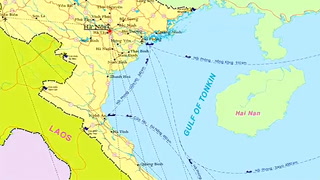
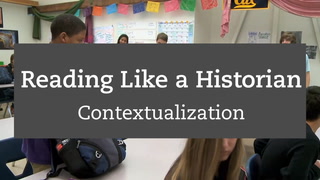
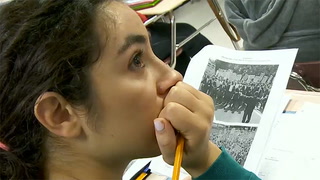
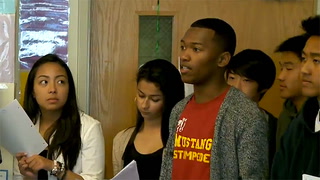
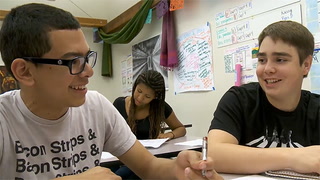



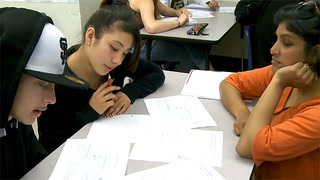









42 Comments
Erin Zost Dec 13, 2021 4:26pm
This is a very interesting way to teach students to see the big picture and the main topic and how they relate. I also liked how she used lessons from the past to help them understand new topics. The types of protest and how students would do that was a good learning experience.
Thomas Perry Feb 22, 2021 11:18am
How and when was Ho Chi Mihn brought into the lesson?
Beverly Thomas Sep 26, 2020 7:25am
The contextuailzation was essential becuase it explained the right here and now
Think about the structure of this lesson. Why is each part important?
They both were important for the student to compare and come to a decision
How do the parts come together to successfully scaffold learning?
The teacher bought the two important pieces together with the breakdown with information fro both subject and the engagement of the testing the student knowledge with the contextual and context was very good way of bringing it together
Why is it helpful to talk about both "big c" and "little c" contexts?
The two "C" is a great way to bring vital imformation together and again she engaged the students by doing so!
Great Jo
Abel Gebremariam Sep 23, 2020 10:31pm
This is a great method for teachers to use with students because developing contextualization skill allows students to elaborate their existing knowledge of a topic and support it with provided sources. This class activity allowed the students to discuss their thoghts and engage in the classroom
Ardis Pennington Jr. Aug 24, 2020 9:42pm
Contextualization is an essential skill because having a first hand view of all that is happening in a given situation or period of time provides an individual the potential of having a firm grasp on their surrounding that will influence your thought process about how people learn.
Each part/element is important because they are constantly changing, allowing for better communication skills, reasoning skills, as well as developing creative skills that are essential to learning and moving individuals to impact the world as leaders of their sector.
The parts come together when including a more capable individual ( tutor or mentor ) that can assist you with the learning process. As the school staff provide knowledge, it most essential that the learner invest timeand effort in the academic work.
It is helpful to talk about big "C" (general or overall) and little "c" (specific) becausea clear contrast are determined when defining successful learning. Further, successful learning of students can be measured(specific) representing a sequence about individual responsibility for learning in society about what should be learned, when and how it should be measured.